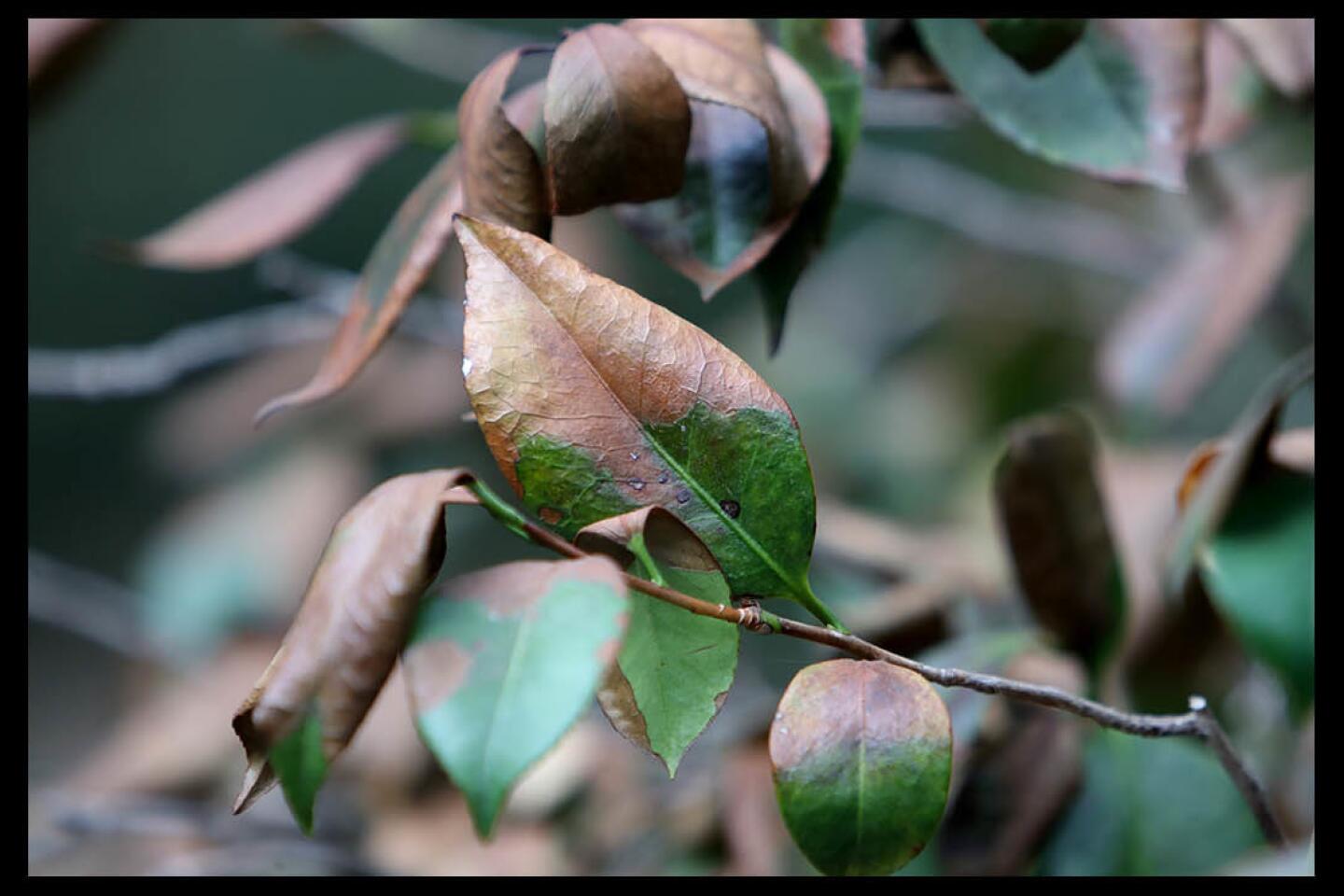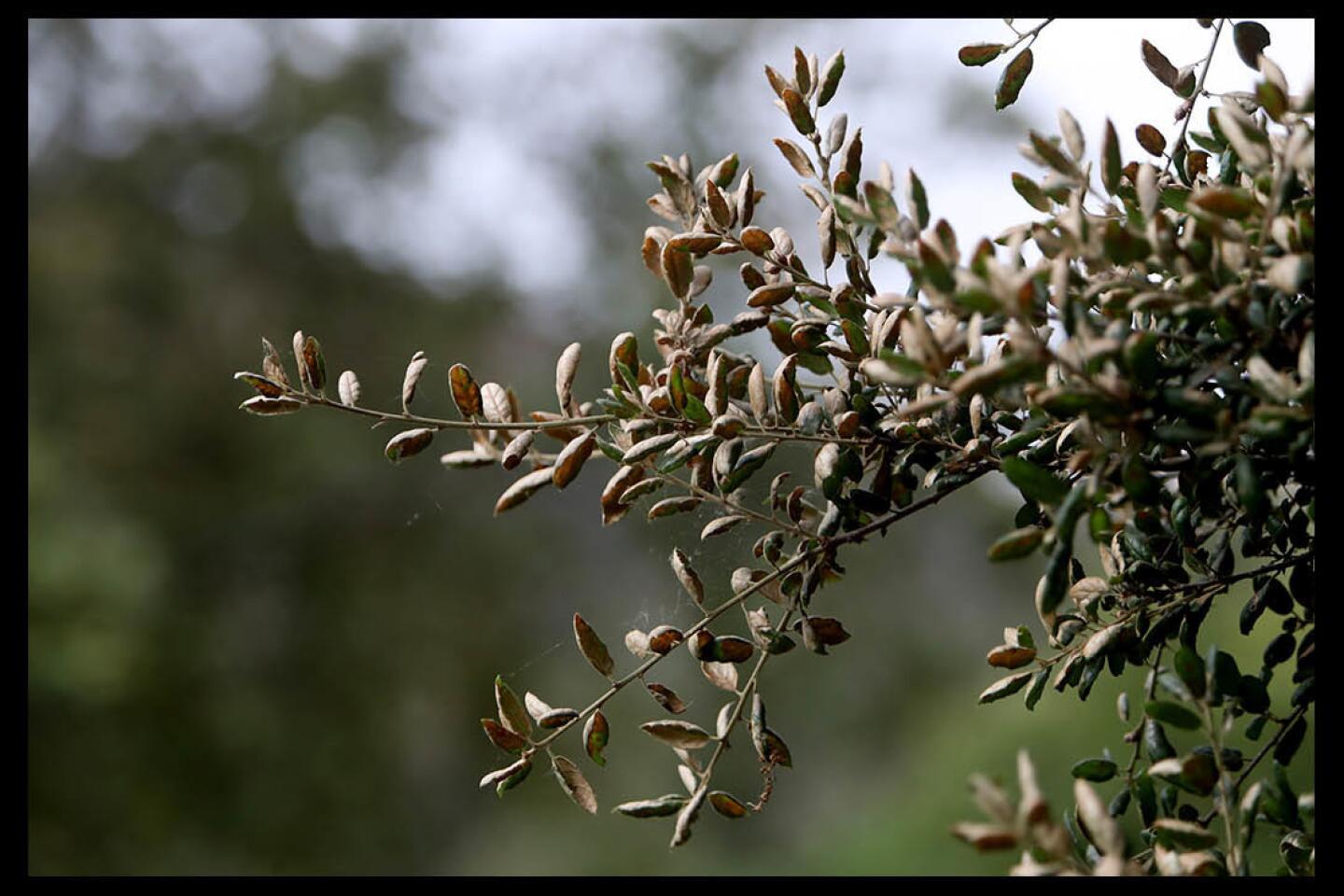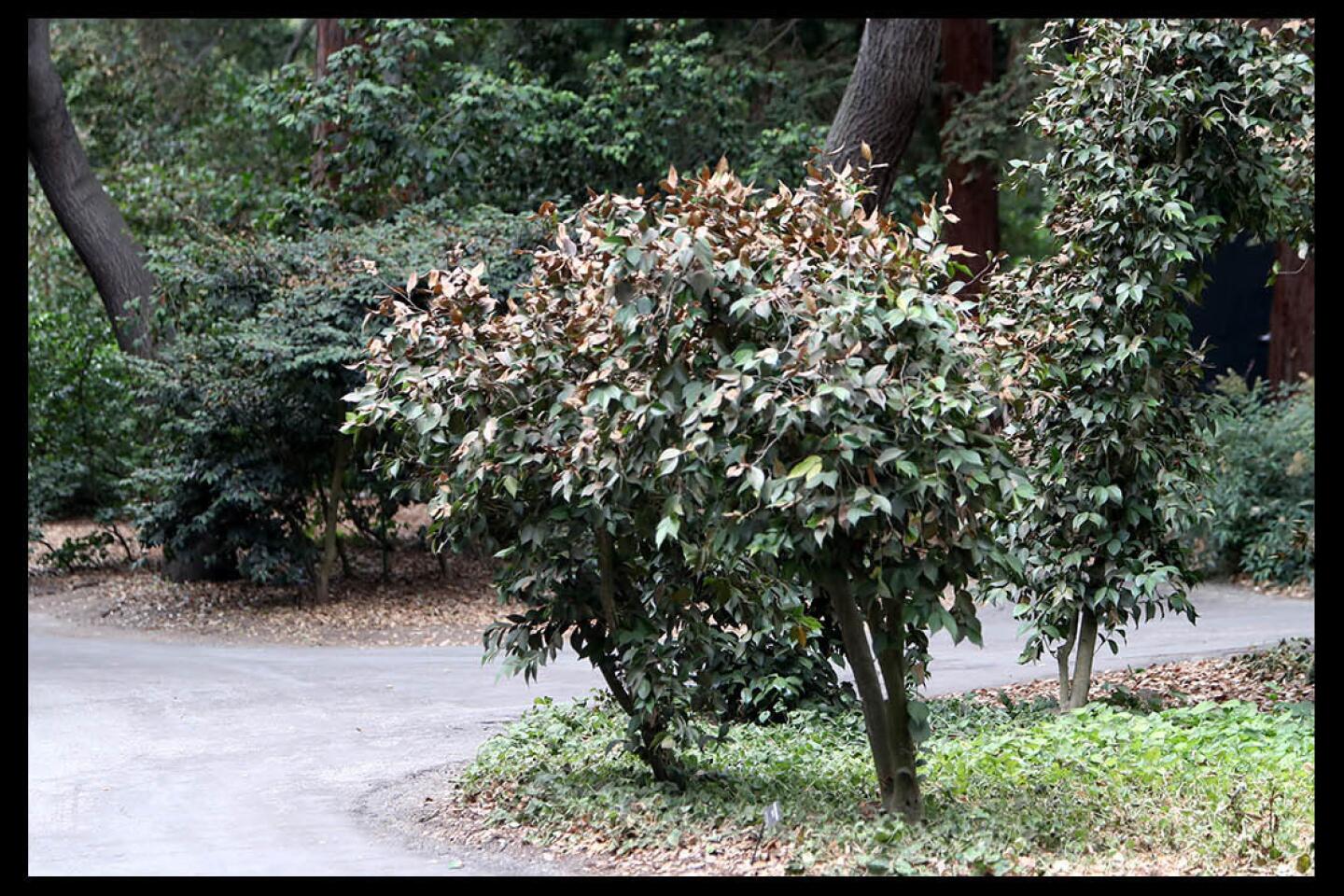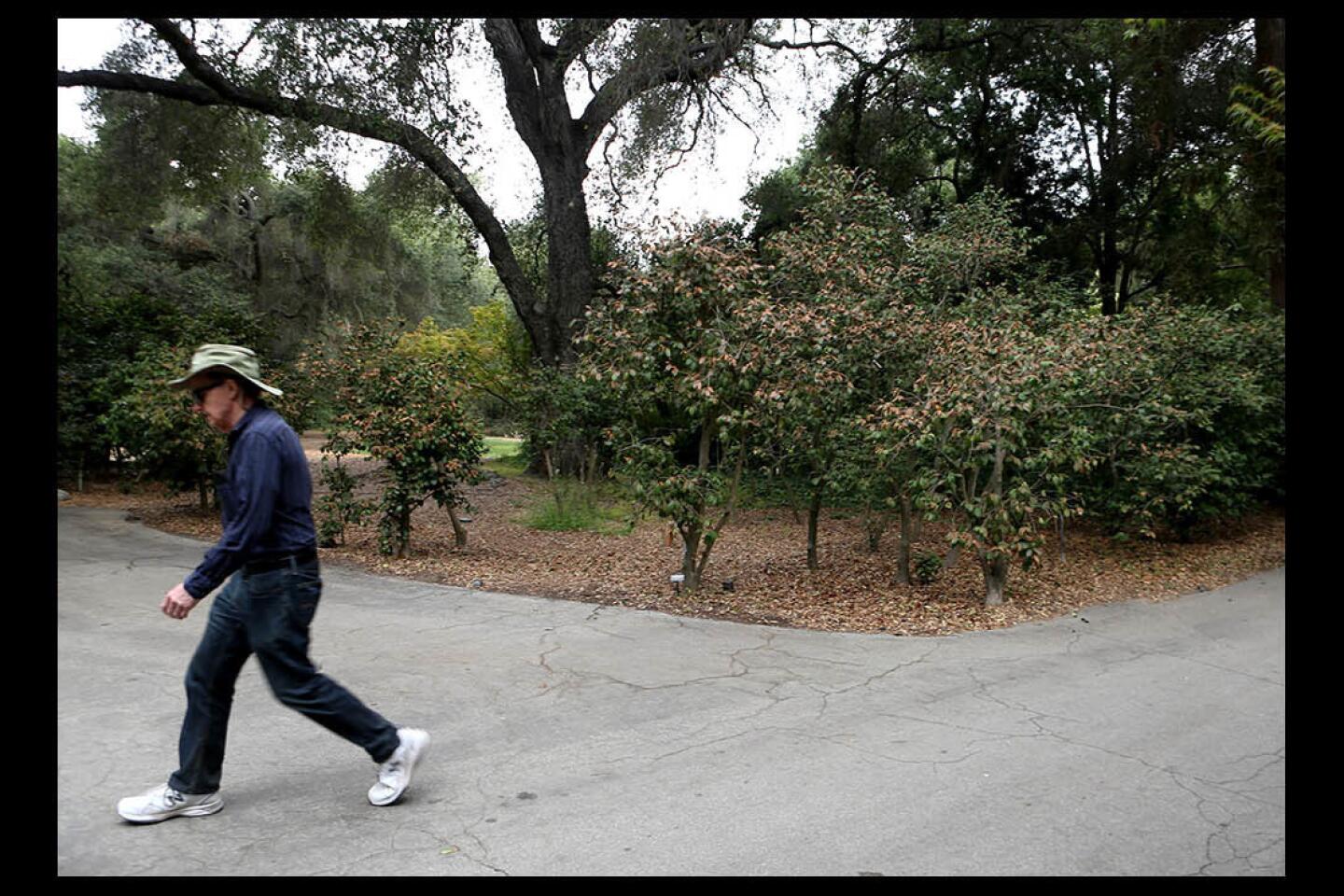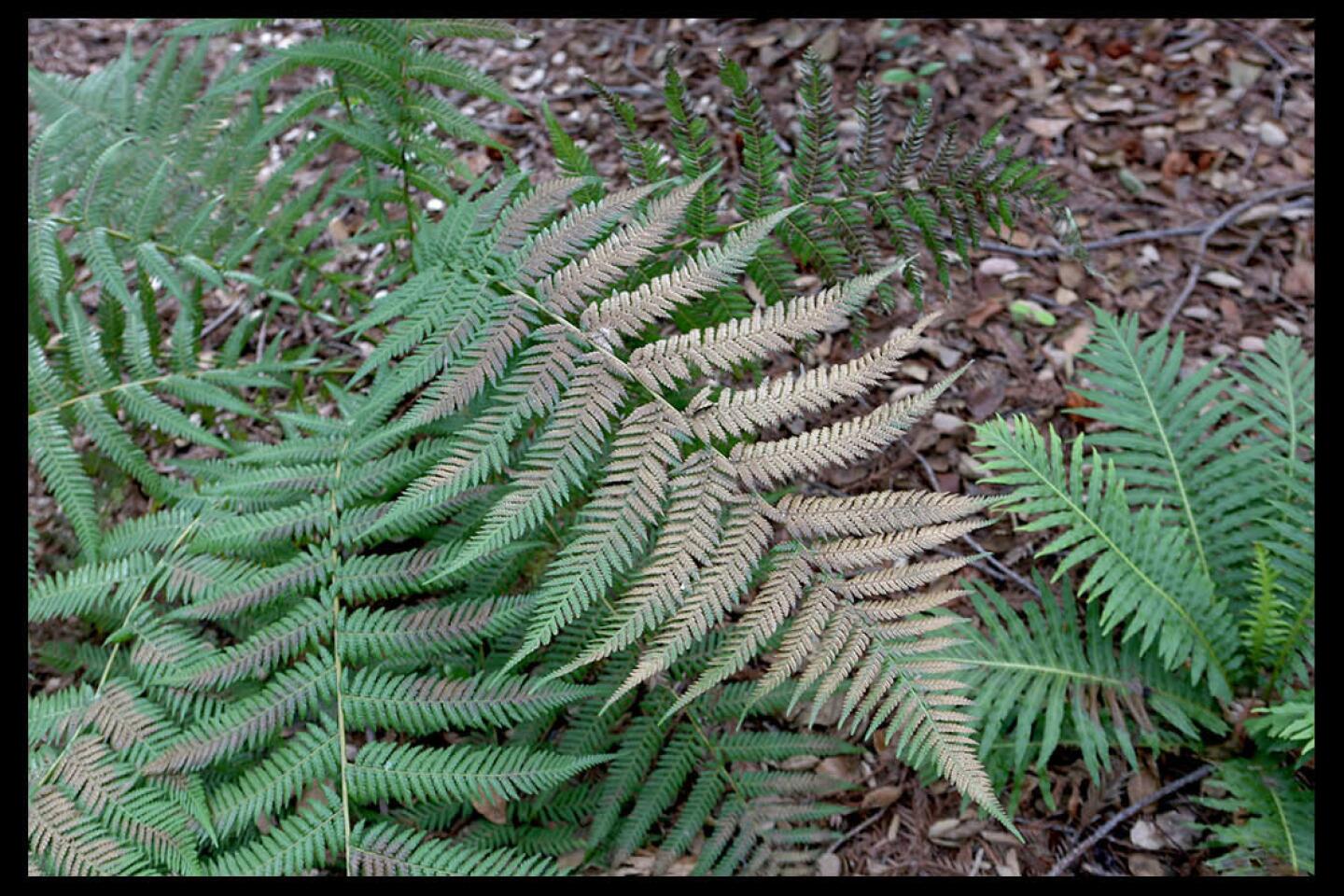Acres of historic camellias at Descanso Gardens scorched during weekend’s triple-digit heat
- Share via
When temperatures at La Cañada’s Descanso Gardens climbed as high 113 degrees Fahrenheit Friday, heat-weary visitors weren’t the only ones who suffered — garden officials announced Monday that 75% of the garden’s historic camellias had been scorched by the sun.
Buds already past their prime were completely dehydrated Tuesday during a visit to the gardens, and singed brown leaves could be seen not only on camellia shrubs but also on ferns and the new growth of surrounding oak trees.
Rachel Young, Descanso’s director of horticulture and garden operations, said it may not have been the high heat alone that damaged foliage, but a rapid, extreme swing from nighttime temperatures in the 70s into triple digits.
“The change in climate is definitely difficult,” Young said. “We’ve never seen this kind of widespread damage. It’s not a death sentence — it’s just not very pretty.”
Some plants, such as cycads in the Ancient Forest, remained relatively unscathed thanks to their naturally waxy surface, while other flowers’ dark pigmentation provided protection from the sun.
For local plant lovers who’ve discovered their own home gardens beginning to brown, Descanso officials advise leaving burned foliage in place, as it provides cover to unaffected leaves, stems and branches.
The experts recommend avoiding pruning until new growth appears to give affected plants the energy they need to rebound. They advise watering deeply at night and refraining from fertilizers that may contain high levels of salty manure. Also, growers should not spray plants with water, as droplets on leaves can magnify the sun’s intensity.
Young said staff is hopeful the damaged camellias will begin to recover by the time autumn rains begin to fall and that blooms will make their regular appearance this winter. Until then, Descanso will be thinking about how to build up areas of the garden to be more resilient in the face of extreme temperatures.
“It’s an interesting time to work in horticulture,” Young said.
Twitter: @SaraCardine

